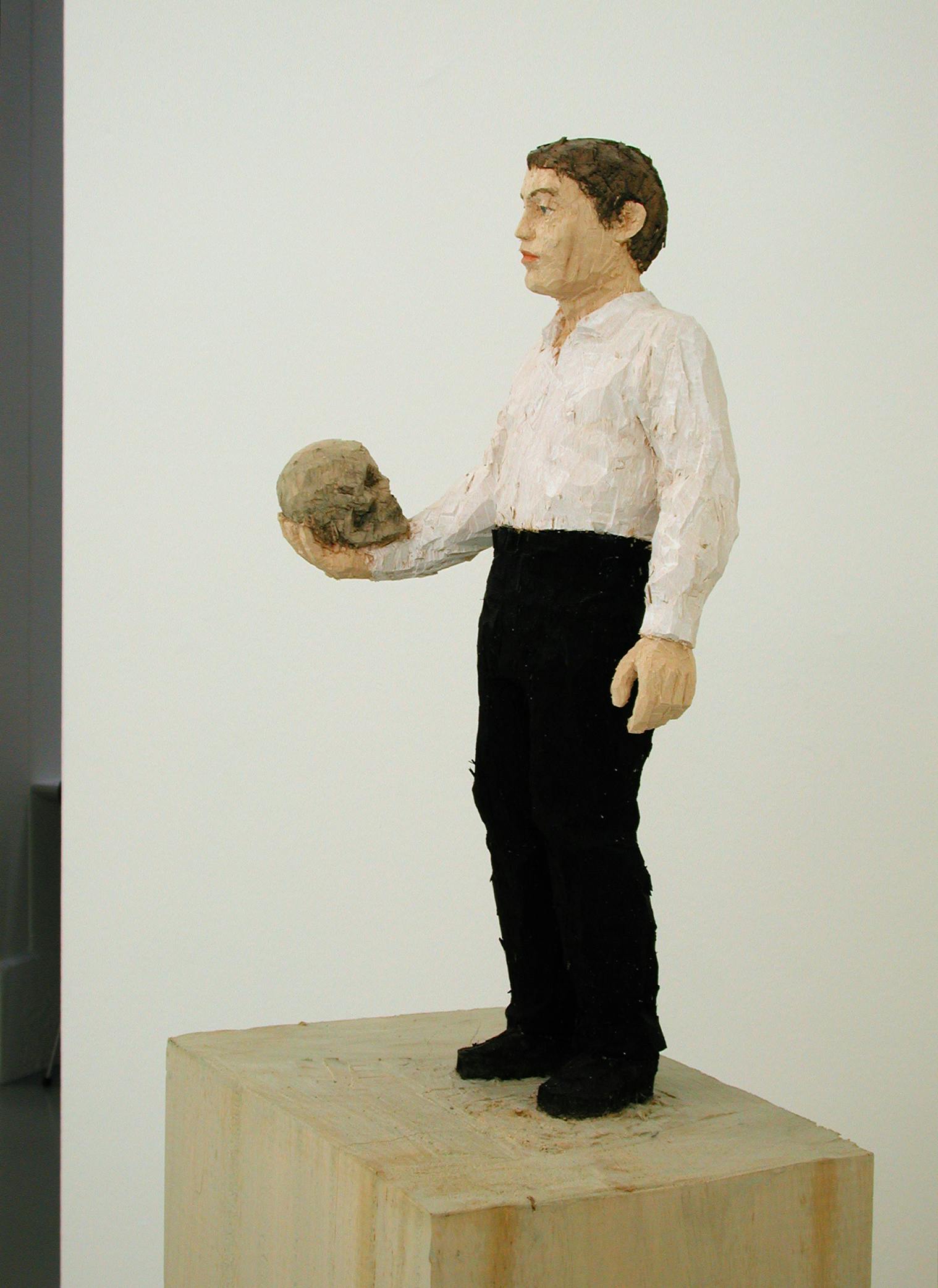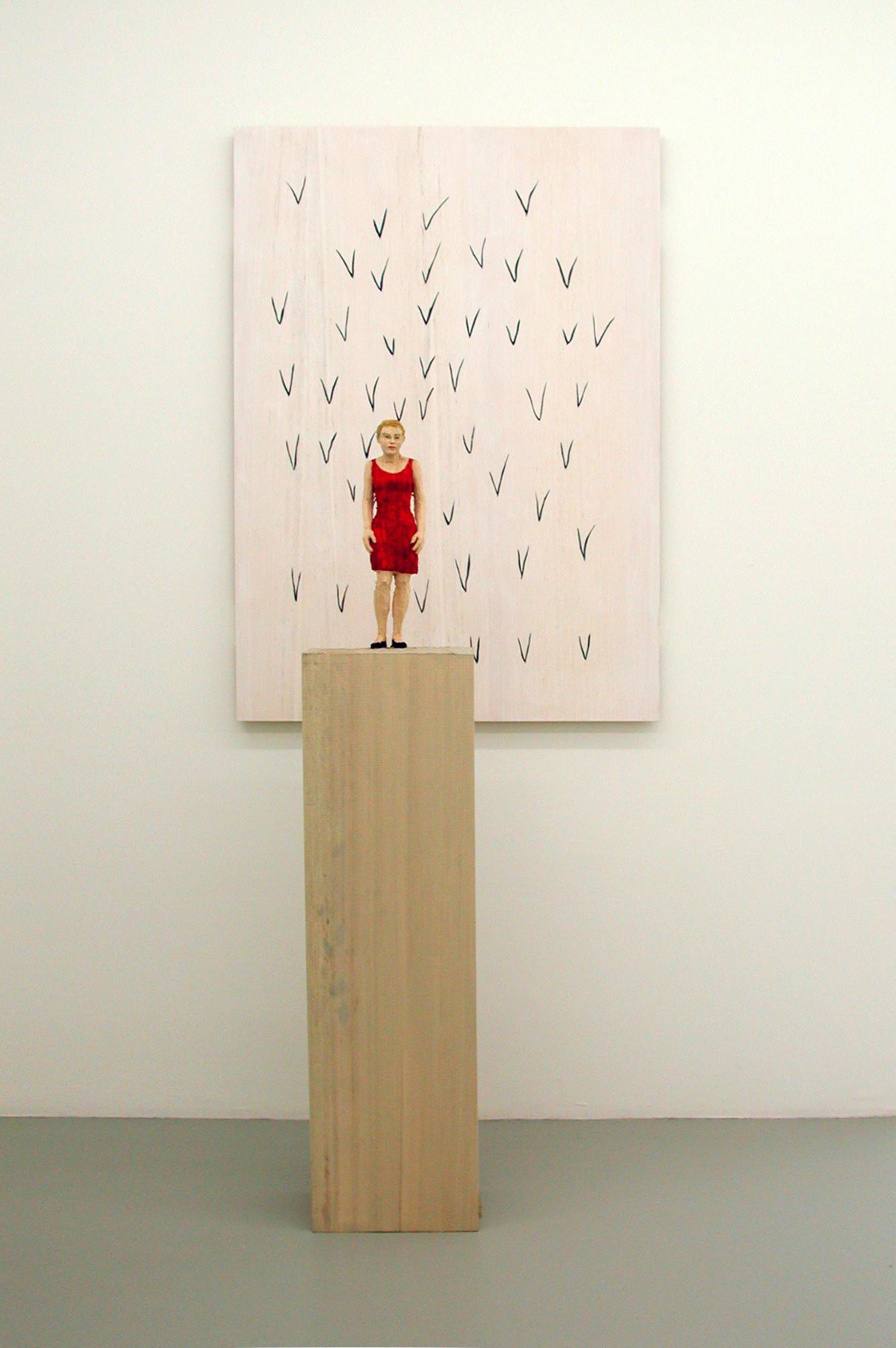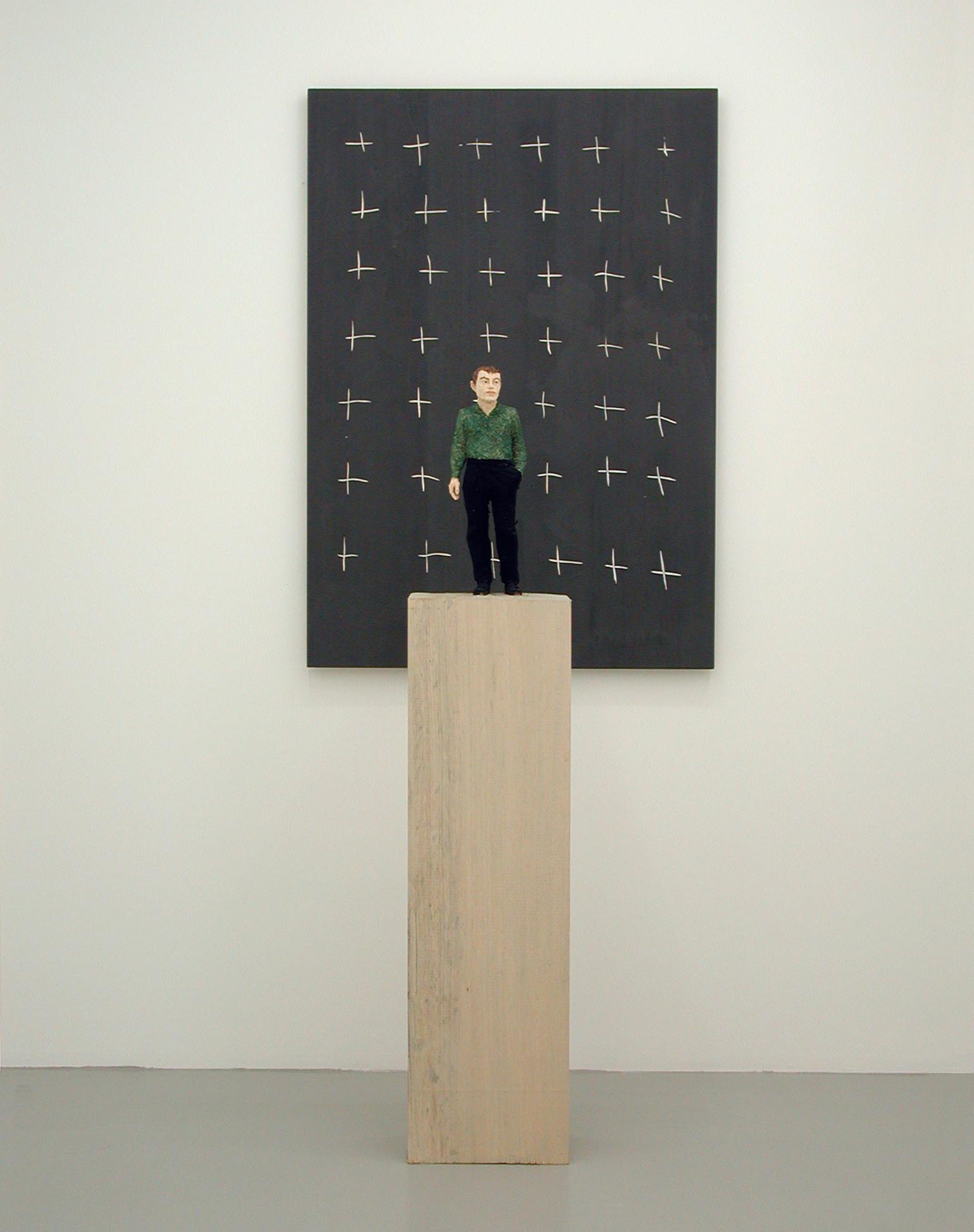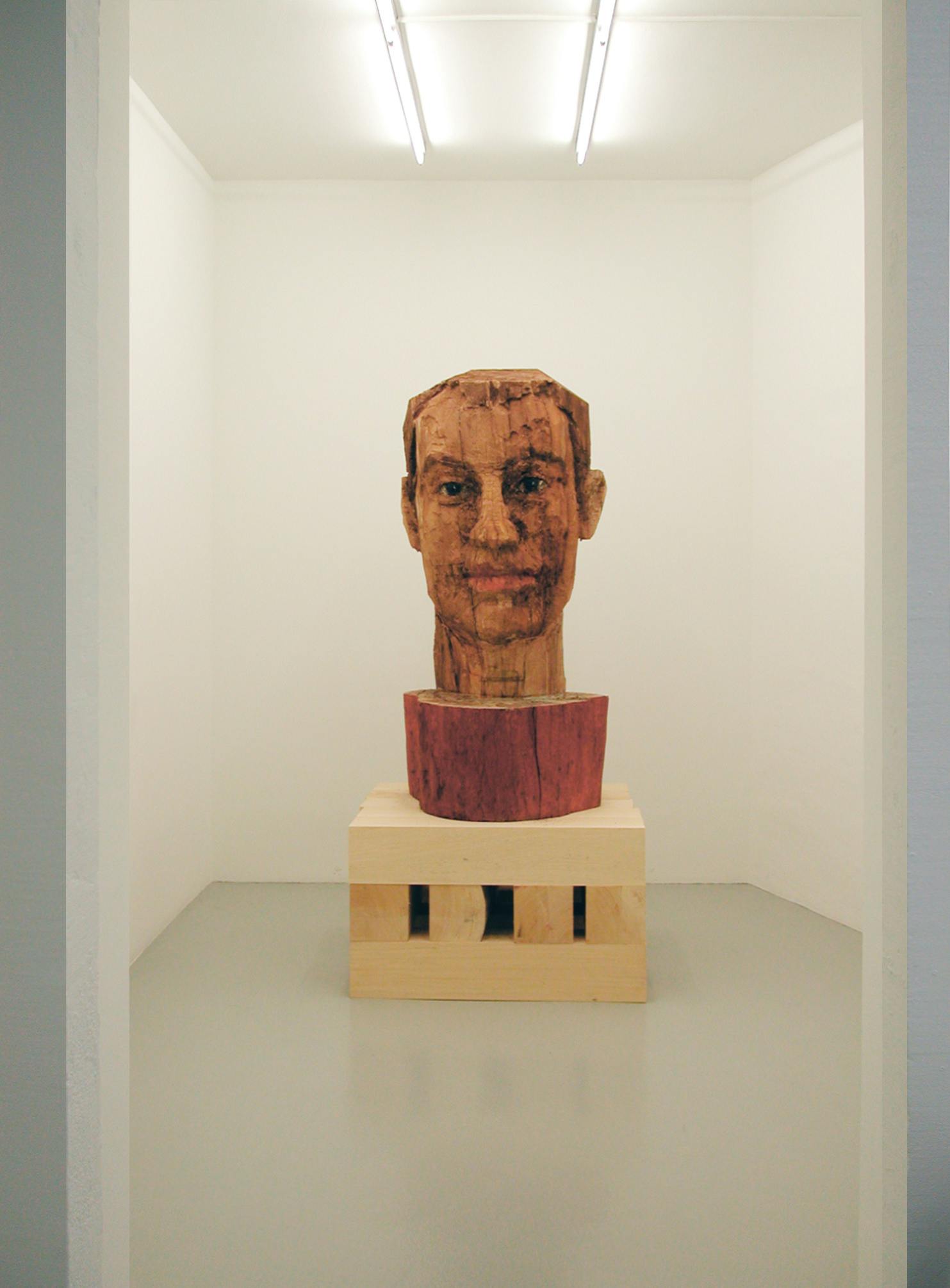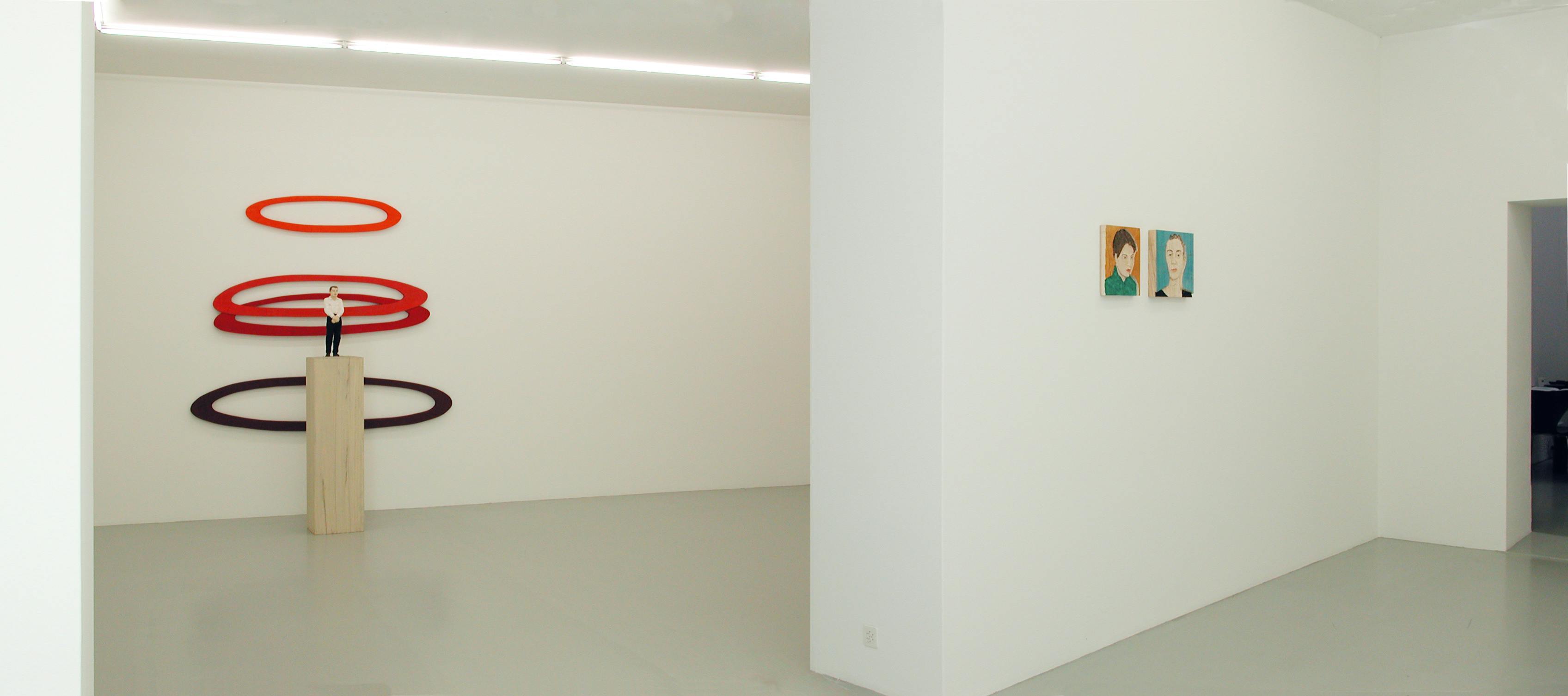We have pleasure in presenting new sculptures by the German sculptor Stephan Balkenhol at our next exhibition. Stephan Balkenhol (born in Fritzlar/Hessen in 1957, lives and works in Karlsruhe and Meisenthal/France) is among the most best known representatives of figurative sculpture. His wood sculptures are constantly shown in large-scale solo exhibitions and are represented in a number of public places. His work has been shown regularly in the Mai 36 Galerie since 1989.
Stephan Balkenhol's work is characterised by his colourfully painted and roughly hewn wooden sculp- tures and reliefs. The emphasis is on over- or under-life-size portrayals of human beings in the form of heads, reliefs and free-standing sculptures, as well as portrayals of animals, hybrid figures and archi- tecture.
The figures are severely reduced and do not portray any specific person. This reduction bears traces of the influence of his teacher, the abstract sculptor Ulrich Rückriem. Balkenhol dispenses with the narra- tive element and refrains from telling stories even in his tableau-like groups of figures. Certain sculp- tures, however, develop a narrative dimension through art-historical references, while others evoke childhood memories, such as the two ship reliefs from 2003. As regards motifs, the sculptures refer to the sculptural tradition of Egyptian and Greek-Roman antiquity, and sculptures ranging from the early Christian to the modern.
Balkenhol explains his decision to work with wood with the resistance that this material offers him. "It also dictates the pace of the work. ...Since much is decided during the working process, it is simply a fact that wood accommodates me and my way of making decisions through the degree of speed it al- lows when working on it." The coarseness of the unpolished surface structure and the simultaneous utmost precision of workmanship are fascinating, reminiscent of incredibly virtuoso cathedral reliefs. These reliefs also make an extraordinarily fresh impression, something that may be explained by the fact that in the process of finding images Balkenhol falls back on an archive of drawings and photo- graphs, which ultimately results in swift and resolute implementation.
His figures are rarely naked. The males are usually clad in black trousers and white shirts, the females frequently in simple dresses. From the mid-90s on, they are also shown with attributes. Actually, the figures always seem to be somehow familiar and yet disturbingly alien. Although they are rooted in our reality, they embody an element of timelessness. This contradiction may be explained by the emotion- less gaze and apathetic attitude that offer countless projection surfaces. At the same time, Balkenhol dissociates them from the spectator by placing them on plinths made of the same treetrunk. And when, finally, the figure standing on a pedestal in a public place is Mr Everyman instead of a historic figure, a hero or a thinker, this represents a radically democratic gesture with which Balkenhol de- monumentalises the monument. [Text: Dominique von Burg]






